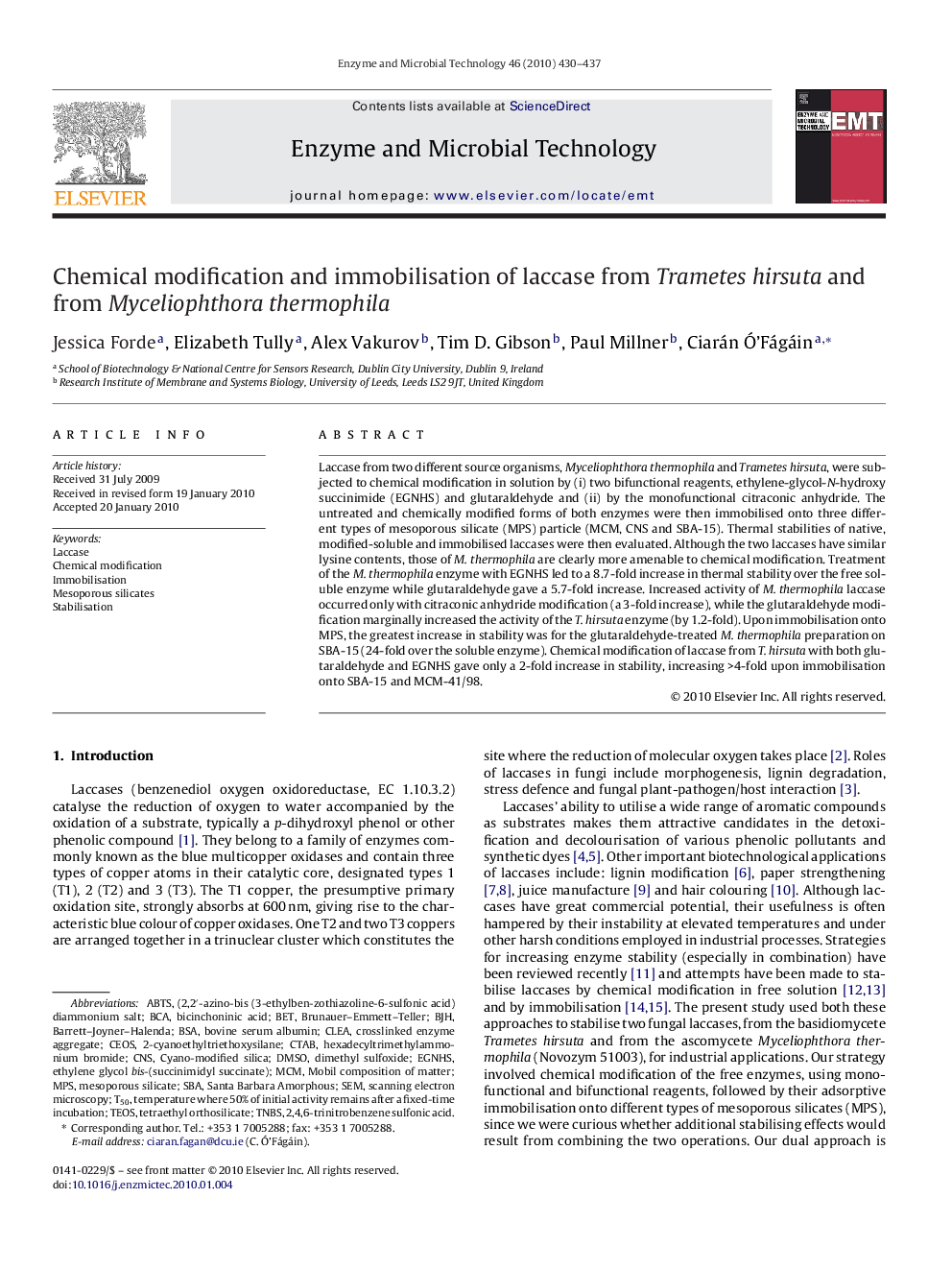| Article ID | Journal | Published Year | Pages | File Type |
|---|---|---|---|---|
| 10233123 | Enzyme and Microbial Technology | 2010 | 8 Pages |
Abstract
Laccase from two different source organisms, Myceliophthora thermophila and Trametes hirsuta, were subjected to chemical modification in solution by (i) two bifunctional reagents, ethylene-glycol-N-hydroxy succinimide (EGNHS) and glutaraldehyde and (ii) by the monofunctional citraconic anhydride. The untreated and chemically modified forms of both enzymes were then immobilised onto three different types of mesoporous silicate (MPS) particle (MCM, CNS and SBA-15). Thermal stabilities of native, modified-soluble and immobilised laccases were then evaluated. Although the two laccases have similar lysine contents, those of M. thermophila are clearly more amenable to chemical modification. Treatment of the M. thermophila enzyme with EGNHS led to a 8.7-fold increase in thermal stability over the free soluble enzyme while glutaraldehyde gave a 5.7-fold increase. Increased activity of M. thermophila laccase occurred only with citraconic anhydride modification (a 3-fold increase), while the glutaraldehyde modification marginally increased the activity of the T. hirsuta enzyme (by 1.2-fold). Upon immobilisation onto MPS, the greatest increase in stability was for the glutaraldehyde-treated M. thermophila preparation on SBA-15 (24-fold over the soluble enzyme). Chemical modification of laccase from T. hirsuta with both glutaraldehyde and EGNHS gave only a 2-fold increase in stability, increasing >4-fold upon immobilisation onto SBA-15 and MCM-41/98.
Keywords
santa barbara amorphousBCACEOSABTSSBAMCMBJHTNBSt50tetraethyl orthosilicateCTABTEOSCLEAmobil composition of matter2,4,6-Trinitrobenzene sulfonic acidBrunauer–Emmett–TellerBSADMSObovine serum albuminChemical modificationImmobilisationBarrett–Joyner–Halendabicinchoninic acidCNSDimethyl sulfoxideMesoporous silicatesMesoporous silicateBETLaccaseSEMScanning electron microscopyMPsHexadecyltrimethylammonium bromideStabilisation
Related Topics
Physical Sciences and Engineering
Chemical Engineering
Bioengineering
Authors
Jessica Forde, Elizabeth Tully, Alex Vakurov, Tim D. Gibson, Paul Millner, Ciarán Ã'Fágáin,
